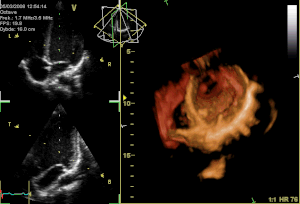Introduction
Bioacoustic signals (BAS) are defined as a family of signals that includes the sounds produced by the human body, whereas, in general, the study of sounds produced by living organisms is referred to as bioacoustics. As BAS are the audible outcome emitted from the human body, they possess valuable diagnostic information regarding the functionality of the human organs involved in the sound production mechanisms.
An everyday-life example of BAS is the pressure signals produced from the beating of the heart, namely heartsounds (HS). To obtain HS, a stethoscope is typically placed on the chest above the heart. The end of the stethoscope has a diaphragm that bends in response to sound; the
sound waves travel through the tubes of the stethoscope to the clinician’s ears. The clinician listens to these sounds to determine certain aspects of the mechanical functioning of the heart (mostly whether the heart valves are functioning properly or not), of which the clinician has been trained to detect. This measurement is qualitative. A microphone can also be used to pick up sound. Microphones convert the mechanical energy of sound into electric energy. The resulting analog electric signal can be digitized and analyzed quantitatively with computer-based algorithms.
Consequently, proper extraction and use of the diagnostic information of the digitized BAS can transform the art of BAS auscultation into a scientific discipline. With proper signal processing methods, the BAS could be converted from acoustic vibrations inside the human organism into graphs and parameters with diagnostic value, resulting in novel diagnostic tools that objectively track the characteristics of the relevant pathology and assist the clinicians in everyday practice. Apart from HS, the BAS family also includes lung sounds (LS), bowel sounds (BS), and joint sounds (JS), with LS and HS being the most often used BAS in everyday clinical practice, although, recently, sufficient research effort has been placed on BS and JS analysis,facilitating their adoption by the physicians as diagnostic means.
History:From the time of ancient Greeks and their doctrine of medical experimentation until at least the 1950s, the LS were considered
as the sounds originating from within the thorax and they were justified mainly on the basis of their acoustic
impression. For example, the writings of the Hippocratic School, in about 400 B.C., describe the chest (lung)
sounds as splashing, crackling, wheezing, and bubbling sounds emanating from the chest . An important contribution
to the qualitative appreciation of LS and HS was the invention of the stethoscope by Rene´ Theophil Lae¨nnec
in 1816. Lae¨nnec’s gadget, which was originally made of wood, replaced the ‘‘ear-upon-chest’’ detection procedure
enhancing the emitted LS and HS . Unfortunately, it took over a century for quantitative analysis to appear.
Attempts for a quantitative approach date to 1930, but the first systematic, quantitative measurement of their characteristics
(i.e., amplitude, pitch, duration, and timing in controls and in patients) is attributed to McKusick et al.,
in 1953 ; the door to the acoustic studies in medicine was finally opened.
To Read More Regarding this topic feel free to click below on the download link of complete pdf
Read More BioAccoustic Signals


